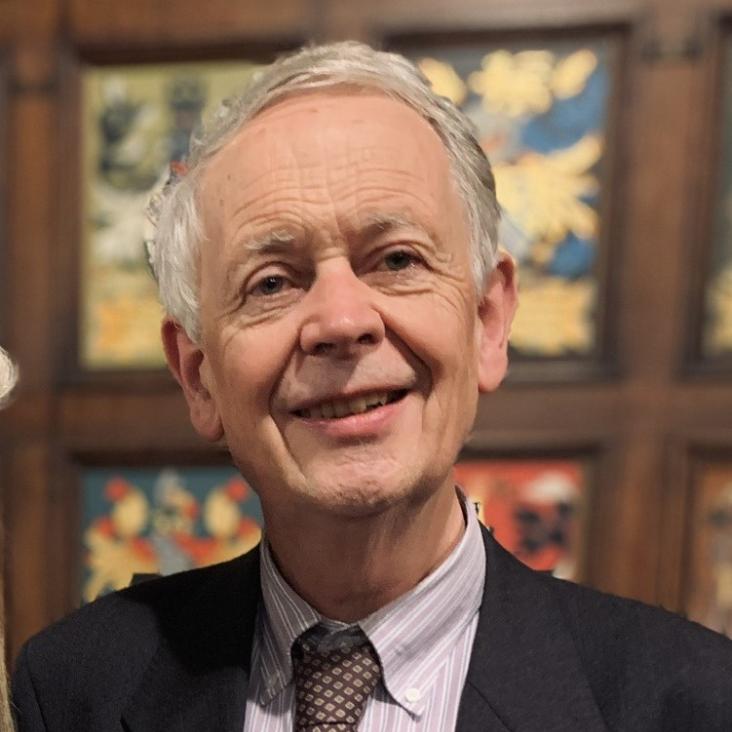Dynamics of the Galaxy's Satellites
ArXiv astro-ph/0006417 (2000)
Abstract:
The Milky Way's satellites provide unique information about the density of the Galactic halo at large radii. The inclusion of even a few rather inaccurate proper motions resolves an ambiguity in older mass estimates in favour of higher values. Many of the satellites are concentrated into streams. The dynamics of the Magellanic Stream provided an early indication that the halo reaches out to beyond 100 kpc. Tidal forces between the Clouds are currently disturbing the Clouds' internal dynamics. One would expect this damage to worsen rapidly as the tidal field of the MW excites the eccentricity of the Clouds' mutual orbit. This process, which has yet to be completely modelled, is important for understanding the degree of self-lensing in searches for gravitational lensing events. The Sagittarius Dwarf galaxy very likely contributes significantly to the Galactic warp. The direction of the warp's line of nodes is incorrectly predicted by the simplest models of the Dwarf's orbit. More sophisticated models, in which a complex distribution of stripped dark matter is predicted, may be more successful.A dynamical model of the inner galaxy
Monthly Notices of the Royal Astronomical Society 314:3 (2000) 433-452
Abstract:
An extension of Schwarzschild's galaxy-building technique is presented that enables one to build Schwarzschild models with known distribution functions (DFs). The new extension makes it possible to combine a DF that depends only on classical integrals with orbits that respect non-classical integrals. With such a combination, Schwarzschild's orbits are used only to represent the difference between the true galaxy DF and an approximating classical DF. The new method is used to construct a dynamical model of the inner Galaxy. The model is based on an orbit library that contains 22 168 regular orbits. The model aims to reproduce the three-dimensional mass density of Binney, Gerhard & Spergel, which was obtained through deprojection of the COBE surface photometry, and to reproduce the observed kinematics in three windows - namely Baade's Window with (l, b) = (10, -40) and two off-axis fields at (80, 70) and (120, 30). The viewing angle is assumed to be 200 the long axis of the bar and the pattern speed is taken to be 60km s-1 kpc-1. The model fits essentially all the available data within the innermost 3 kpc. The axial ratio and the morphology of the projected density contours of the COBE bar are recovered to excellent accuracy within corotation. The kinematic quantities - the line-of-sight streaming velocity and velocity dispersion, as well as the proper motions when available - are recovered, not merely for the fitted fields at (10, -40) and (80, 70), but also for three new fields at (80.4, -60), (10.21, -10.67) and (-10.14, 10.81). The dynamical model deviates most from the input density close to the Galactic plane just outside corotation, where the deprojection of the surface photometry is suspect. The dynamical model does not reproduce the kinematics at the most distant window, (120, 30), where disc contamination of the data may be severe. Maps of microlensing optical depth are presented both for randomly chosen stars and for stars that belong to individual components within the model. While the optical depth to a randomly chosen star in Baade's Window is half what measurements imply, the optical depth to stars in a particular component can be as high as the measured values. The contributions to the optical depth towards randomly chosen stars from lenses in different components are also given.The orbit and mass of the Sagittarius dwarf galaxy
Monthly Notices of the Royal Astronomical Society 314:3 (2000) 468-474
Abstract:
Possible orbital histories of the Sgr dwarf galaxy are explored. A special-purpose N-body code is used to construct the first models of the Milky Way-Sgr dwarf system in which both the Milky Way and the Sgr dwarf are represented by full N-body systems and followed for a Hubble time. These models are used to calibrate a semi-analytic model of the Sgr dwarf's orbit that enables us to explore a wider parameter space than is accessible to the N-body models. We conclude that the extant data on the Sgr dwarf are compatible with a wide range of orbital histories. At one extreme the Sgr dwarf initially possesses ∼1011 M⊙ and starts from a Galactocentric distance RD(0) ≳ 200 kpc. At the other extreme the Sgr dwarf starts with ∼109 M⊙ and RD(0) ∼60 kpc, similar to its present apocentric distance. In all cases the Sgr dwarf is initially dark matter dominated and the current velocity dispersion of the Sgr dwarf's dark matter is tightly constrained to be 21 ± 2 km s-1. This number is probably compatible with the smaller measured dispersion of the Sgr dwarf's stars because of (i) the dynamical difference between dark and luminous matter, and (ii) velocity anisotropy.Microlensing and Galactic Structure
ArXiv astro-ph/0004362 (2000)
Abstract:
Because we know little about the Galactic force-field away from the plane, the Galactic mass distribution is very ill-determined. I show that a microlensing survey of galaxies closer than 50 Mpc would enable us to map in three dimensions the Galactic density of stellar mass, which should be strictly less than the total mass density. A lower limit can be placed on the stellar mass needed at RThe Age of the Solar Neighbourhood
ArXiv astro-ph/0003479 (2000)


